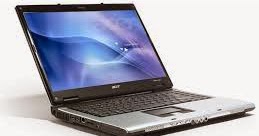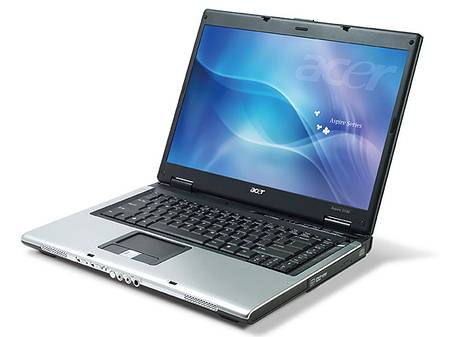- Download Acer Aspire 5100 Drivers Windows 7
- Acer Aspire 5100 Sound Driver Download
- Download Acer Aspire 5100 Drivers For Windows 7
This Laptop main page contains links to articles (sections) needed for configuring a laptop for the best experience. Setting up a laptop is in many ways the same as setting up a desktop. However, there are a few key differences. Arch Linux provides all the tools and programs necessary to take complete control of your laptop. These programs and utilities are highlighted below, with appropriate tips tutorials.
Acer BIOS ID Motherboard manufacturer, model, PCB revision; ACR1AE00-I07-971126-R02-B0: Acer M3A ACR1BE00-I07-961001-R01-E1: Acer V35 ACR29E00-I08-970610-R01-E5. Sharing Debugger lets you preview how your content will look when it's shared to Facebook and debug any issues with your Open Graph tags.
Download Acer Aspire 5100 Drivers Windows 7
To gain an overview of the reported/achieved Linux hardware compatibility of a particular laptop model, see the results per vendor of below subpages.

- Click to see our best Video content. Take A Sneak Peak At The Movies Coming Out This Week (8/12) New Movie Releases This Weekend: February 12th – February 14th.
- If you find that the screen works normally (it doesn't turn black) in safe mode, then there is probably a corrupted drive for your video card (safe mode loads the generic windows driver and not the one specific to your card). Go into the Device Manager under display adapters and right click your display adapter and click Uninstall.
- All Dell Passwords, All Compaq/HP Phoenix Bios based old notebooks, some Acer Aspire with phoenix some Fujitsu or Samsungs I can provide passwords Ill need full service tag 7 digits + -595B or whatever, all HP/COMPAQ/ACER ASPIRE NEED THE 5 CODE HASH ERROR if not found press F2 or F12 to get the Hash Code. Regards, hackz2you.
If there are laptop model specific instructions, the respective article is crosslinked in the first column of the vendor subpages. In case the model is not listed in the vendor table, existing instructions of similar models via the Category:Laptops vendor subcategory may help.
Power management
Power management is very important for anyone who wishes to make good use of their battery capacity. The following tools and programs help to increase battery life and keep your laptop cool and quiet.
Battery state
Reading battery state can be done in multiple ways. Classical method is some daemon periodically polling battery level using ACPI interface. On some systems, the battery sends events to udev whenever it (dis)charges by 1%, this event can be connected to some action using a udev rule.
Acer Aspire 5100 Sound Driver Download
ACPI
Battery state can be read using ACPI utilities from the terminal. ACPI command line utilities are provided via the acpi package. See ACPI modules for more information.
- cbatticon is a battery icon that sits in the system tray.
- batterymon-cloneAUR is a battery monitor that sits in the system tray, similar to batti.
- batifyAUR is an udevrule file triggering plug and battery level notifications (multi-x sessions support).
- batsignalAUR is a lightweight battery monitor daemon that uses libnotify to warn of low battery levels.
Hibernate on low battery level
If your battery sends events to udev whenever it (dis)charges by 1%, you can use this udev rule to automatically hibernate the system when battery level is critical, and thus prevent all unsaved work from being lost.
udevadm monitor --property while on battery and see if any events are reported. You should wait at least 1% drop. If no events are reported and /sys/class/power_supply/BAT0/alarm is non-zero then the battery will likely trigger an event when BAT0/energy_now drops below the alarm value, and the udev rule will work as long as the percentage math works out. Some laptops have an option for this disabled in BIOS by default.This rule will be repeated whenever the condition is set. As such, when resuming from hibernate when the battery is critical, the computer will hibernate directly. Some laptops do not boot beyond a certain battery level, so the rule could be adjusted accordingly.
If you have more than one battery or if you are using a battery powered peripheral device, the rule could be triggered unexpectedly by another battery discharging; this can be fixed by checking /sys/class/power_supply/nameOfMainBattery/attributesAndOtherDirectories for another pair attribute/value to add to your udev rule. This further attribute must be specific to the main battery, for example model_name.
Batteries can jump to a lower value instead of discharging continuously, therefore a udev string matching pattern for all capacities 0 through 5 is used.
Other rules can be added to perform different actions depending on power supply status and/or capacity.

If your system has no or missing ACPI events, use cron with the following script which uses acpi:
If you have more than one battery or if you are using a battery powered peripheral device, you should modify the second line of the script by adding grep to monitor the correct battery like so: acpi -b | grep 'Battery 0' | awk -F'[,:%]' '{print $2, $3}' | {. Replace Battery 0 with your required battery as reported by acpi -b.
Battery 0 is unplugged, Battery 1 becomes Battery 0 automatically, and so on.Testing events
One way to test udev rules is to have them create a file when they are run. For example:
This creates a file at /home/example/discharging when the laptop charger is unplugged. You can test whether the rule worked by unplugging your laptop and looking for this file. For more advanced udev rule testing, see Udev#Testing rules before loading.
Suspend and Hibernate
Manually suspending the operating system, either to memory (standby) or to disk (hibernate) sometimes provides the most efficient way to optimize battery life, depending on the usage pattern of the laptop.
See the main article Suspend and hibernate.
Hard drive spin down problem

Documented here.
To prevent your laptop hard drive from spinning down too often, set less aggressive power management as described in hdparm#Power management configuration. Even the default values may be too aggressive.
Modify wake events
Events which cause the system to resume from power states can be regulated in /proc/acpi/wakeup. Writing an entry from the Device column toggles the status from enabled to disabled, or vice-versa.
For example, to disable waking from suspend (S3) on opening the lid, run:
The factual accuracy of this article or section is disputed.
This change can be made permanent with tmpfiles.d(5):
Hardware support
Screen brightness

See Backlight.
Touchpad
To get your touchpad working properly, see the libinput page. Touchpad Synaptics is the older input driver, which is currently in maintenance mode and is no longer updated.
Touchpad not detected at all
If a touchpad device is not detected and shown as a device at all, a possible solution might be using one or more of these kernel parameters.
Elantech
If it is an Elantech Touchpad not being detected and you are getting the following line in your journalctl -k:
it is related to an issue with the psmouse module trying to use a secondary bus for the touchpad device, and elan_i2c failing to do so. The fix is to force it to use the primary one. Just create the file below and reload the psmouse module or reboot:
Fingerprint Reader
See Fingerprint-gui, fprint and ThinkFinger (for ThinkPads).
Webcam
Download Acer Aspire 5100 Drivers For Windows 7
See Webcam setup.
Hard disk shock protection
There are several laptops from different vendors featuring shock protection capabilities. As manufacturers have refused to support open source development of the required software components so far, Linux support for shock protection varies considerably between different hardware implementations.
Currently, two projects, named HDAPS and Hpfall (available in the AUR), support this kind of protection. HDAPS is for IBM/Lenovo Thinkpads and hpfall for HP/Compaq laptops.
Hybrid graphics
The laptop manufacturers developed new technologies involving two graphic cards in a single computer, enabling both high performance and power saving usages. These laptops usually use an Intel chip for display by default, so an Intel graphics driver is needed first. Then you can choose methods to utilize the second graphics chip.
Audio mute LED
On laptops using Intel HD Audio the user may need to manually specify the codec model in order to get the audio mute LED to work. First, check if your laptop uses Intel HD Audio:
If this produces any output then your laptop does use Intel HD Audio. Next, you will need to find your audio codec model. To do this run:
Now you need to find their codec in the list of available model names. If you cannot find a codec for your specific model, you may be able to find one that works through trial and error.
In order to tell the kernel module which model-specific options to load, specify the model=kernel module option. For example:
To test whether or not this worked, the kernel module must be reloaded. You can do this by rebooting.
Network time syncing
For a laptop, it may be a good idea to use Chrony as an alternative to NTPd, OpenNTPD or systemd-timesyncd to sync your clock over the network. Chrony is designed to work well even on systems with no permanent network connection (such as laptops), and is capable of much faster time synchronisation than standard ntp. Chrony has several advantages when used in systems running on virtual machines, such as a larger range for frequency correction to help correct quickly drifting clocks, and better response to rapid changes in the clock frequency. It also has a smaller memory footprint and no unnecessary process wakeups, improving power efficiency.
See also
- General
- CPU frequency scaling is a technology used primarily by notebooks which enables the OS to scale the CPU frequency up or down, depending on the current system load and/or power scheme.
- Display Power Management Signaling describes how to automatically turn off the laptop screen after a specified interval of inactivity (not just blanked with a screensaver but completely shut off).
- Wireless network configuration provides information about setting up wireless connection.
- Extra keyboard keys describes configuration of Media keys.
- acpid which is a flexible and extensible daemon for delivering ACPI events.
- Pages specific to certain laptop types
- See Category:Laptops and its subcategories for pages dedicated to specific models/vendors.
- Battery tweaks for ThinkPads can be found in TLP and the tp_smapi article.
- acerhdf is a kernel module for controlling fan speed on Acer Aspire One and some Packard Bell Notebooks.
- External resources
